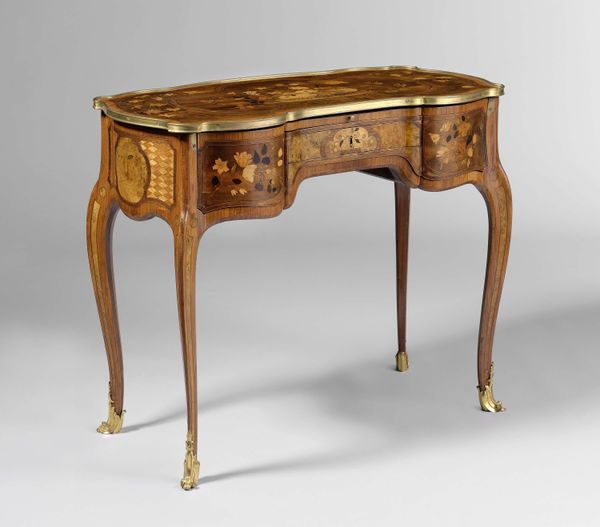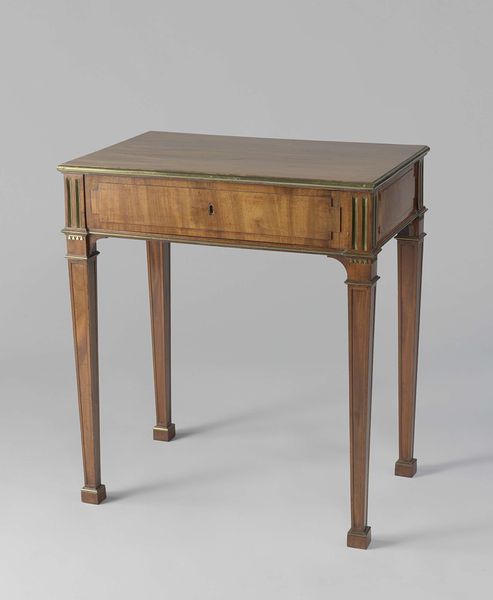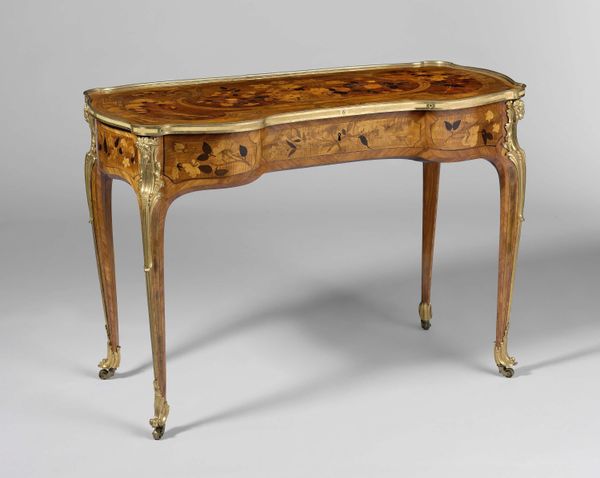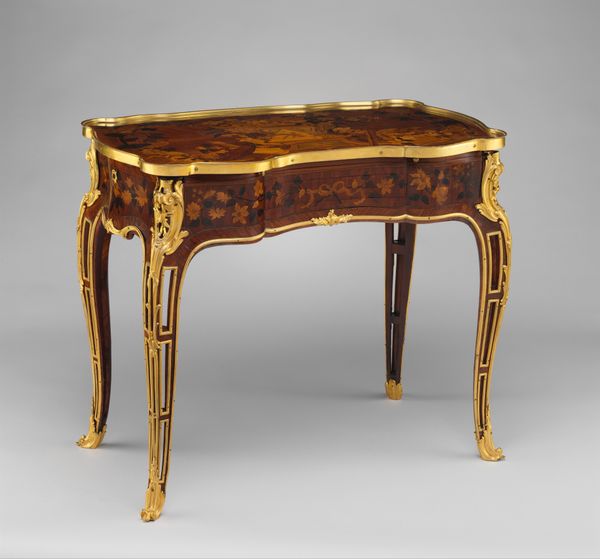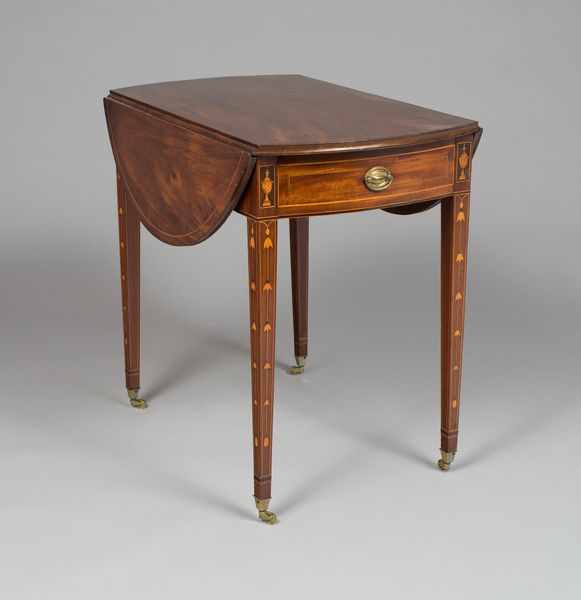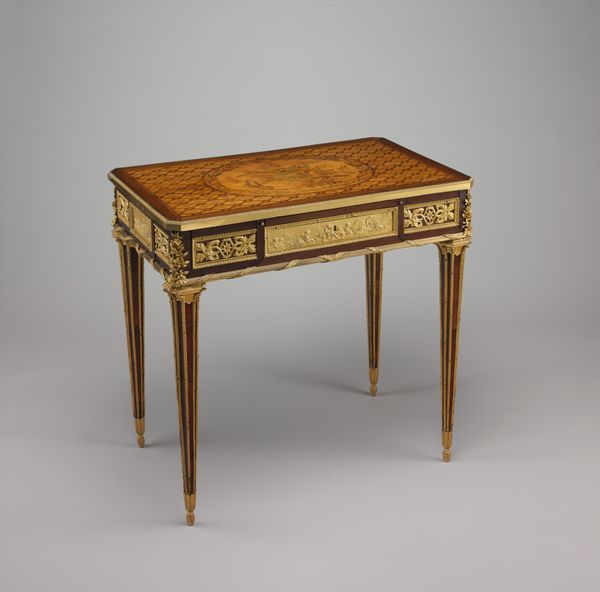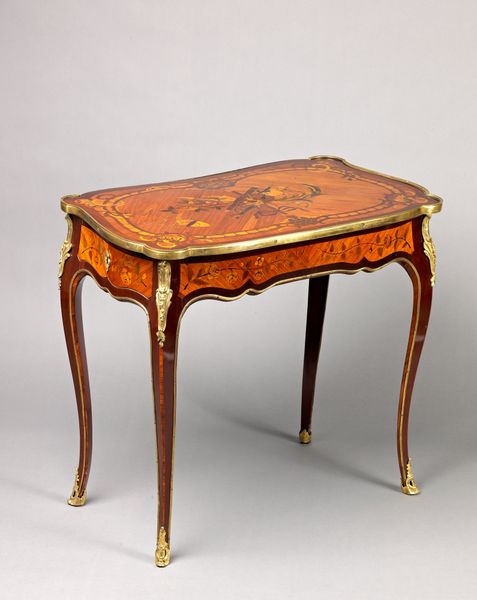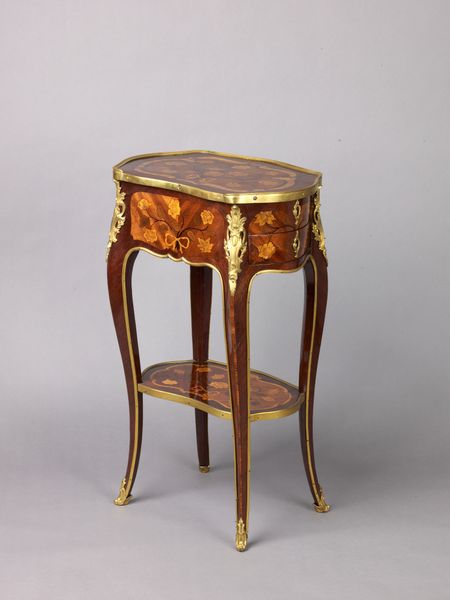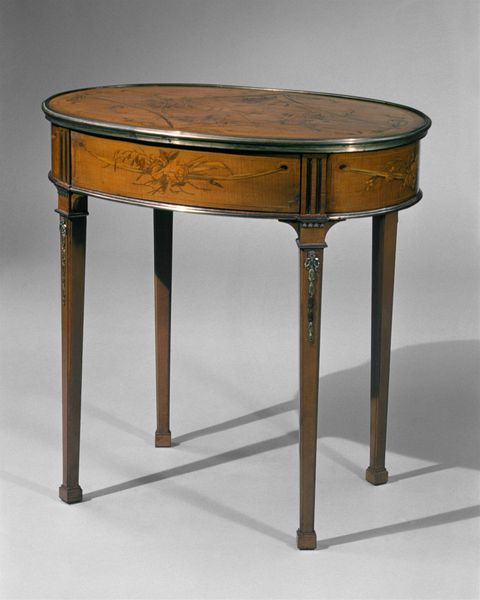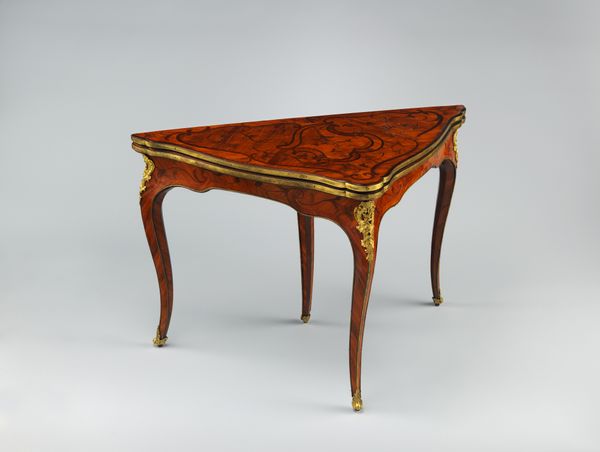
Dimensions: height 74.5 cm, width 74.5 cm, depth 51.5 cm, width 49.3 cm, depth 39.8 cm
Copyright: Rijks Museum: Open Domain
Curator: I find this late 18th-century writing table by David Roentgen so compelling. It's a marvelous example of Rococo decorative art. The combination of wood, bronze, and metal lends it an aura of refined practicality, don't you think? Editor: Immediately, I'm struck by the delicate tension between the table's apparent fragility and the inherent power structures it represents. Furniture like this wasn’t just functional; it was a symbol of wealth and privilege in pre-revolutionary Europe. Curator: Absolutely, the materiality here signifies wealth, power, and cultural memory, doesn't it? Rococo as a movement, carried motifs across forms. How interesting that such elegance served an exclusive class. The little vignettes of sailing ships around the drawer - what do they evoke for you? Editor: I read those ship images as imperial longings - mercantile aspirations that were quite violent. Trade and its vessels signify connections, exchanges, but also speak to exploitation through naval dominance and its deep, insidious impact. How were colonies represented in this piece, or were they simply erased? Curator: It does prompt the question of what is represented or omitted within these aesthetic choices, doesn’t it? Perhaps Rococo operated through what was presented. This also points towards our contemporary understanding, we are compelled to look beyond aesthetics. I would agree with that reading. The linear arrangements, combined with circular table-top suggests some symbolic harmony perhaps. Editor: Harmony, maybe, but carefully constructed. The very geometry speaks volumes. The circular top, often associated with equality, contrasts with the supporting legs and embellishments, highlighting that, despite outward appearances, there remained stark inequalities in power dynamics. Curator: So you are reading these shapes with the time of it's creation in mind. It reminds me that art offers psychological insight into our historical past. I can’t help but admire Roentgen's attention to detail. It shows that we have more ways of expressing the personal that are available today. Editor: Agreed. By drawing connections between these symbolic registers – class, wealth, colonialism, form – it allows us to use pieces like these to think through these issues then and today, challenging assumptions about beauty and revealing uncomfortable truths about how society perpetuates power imbalances. Curator: I see what you mean. Thinking through the social implications enriches our understanding, yes. Thanks for showing me a new layer. Editor: Of course, likewise!
Comments
rijksmuseum about 2 years ago
⋮
Under David Roentgen, the family cabinetmaking workshop in Neuwied (Germany) became the most famous in all of Europe. Like his father Abraham, he specialized in mechanically complex furniture; even this simple table is not opened with a key, but by means of a system of hidden buttons. The tabletop has a chinoiserie scene in marquetry.
Join the conversation
Join millions of artists and users on Artera today and experience the ultimate creative platform.


